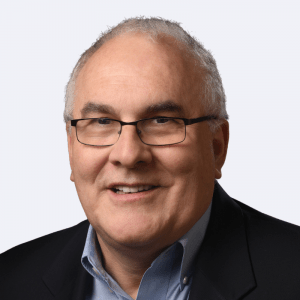It’s Time. Open RAN is Commercially Available

Network automation has many strings to its bow, and the array of standards, initiatives, software and ideas is vast. But everything going on in the space shares a common factor – reducing vendor lock-in, and ultimately making it easier for operators to expand, innovate and ultimately make money.
This is the philosophy at the heart of Open RAN, which helps operators transform their radio access network and deploy a truly cloud-native service. This brings huge benefits. Open RAN allows for 5G native architecture that can work across 4G as well, which makes it particularly attractive for operators ‘starting from scratch’ in greenfield markets, where there are fewer legacy networks to untangle. It allows hardware from any vendor, via a software layer, to connect to the transport network and from there to the individual services running along the network. And crucially, Open RAN drastically reduces time to market – rather than a physical installation being required for each appliance in each site, a disaggregated approach means remote deployment and much shorter project timelines.
Mavenir is leading an ecosystem at the heart of Open RAN and the wider drive towards RAN disaggregation – with the aim of helping vendors as well as operators. “Open RAN is more than just technology – it’s about changing the supply chain, creating organisational strengths to support it, and bringing the pieces together into a multivendor environment to build the RAN networks of the future,” John Baker. “We’re trying to level the playing field so new vendors can get in there and compete, and at the same time allowing operators to take negotiating power into their own hands. This means they can control the profitability, no longer needing to pay for margin stacking and hidden services – and ultimately, Open RAN allows all operators to compete on a feature by feature basis.”
The Mavenir Open RAN story began when the company became a leader in the virtualisation and disaggregation that was taking place around the core elements of operator networks, and looked to apply it to the heavily proprietary area of RAN, where operators had been typically locked in to lengthy service terms and bespoke hardware across huge swathes of their networks. The first step to transform the landscape, according to Mavenir, was making sure Open RAN’s documentation was watertight. “We realised that if we couldn’t get a full specification out, we would not be able to reach the MNOs and ultimately change the ecosystem,” said Baker. “So we got our strength behind it and made sure the O-RAN specification was complete, unlike 3GPP where there were hundreds of missing parameters and has enabled the proprietary, closed systems of today.”
Since then, progress has been rapid. Operators across the globe, from the UK to India, to the Democratic Republic of Congo, from the UAE to Brazil, are embracing the technology one by one. Notably, Telefonica and Vodafone have been a key driver of Open RAN adoption: in a matter of weeks after trialing the technology in Europe, Vodafone announced a tender to cover 100,000 sites – and specifically excluded any vendor not prepared to comply with open-access RAN specifications. As Baker puts it, “The operators are forcing Open RAN to be part of the conversation.”
The Open RAN sales pitch isn’t done yet. “Among the operators, there are haves and have nots when it comes to adopting open source RAN,” said Baker. “Vodafone and Telefonica, for example, have really grabbed hold of Open RAN. But there are several operators still sitting back and waiting, feeling they can’t afford to leave their current vendor.” There are also cultural factors in play. Moving to Open RAN, just like disaggregation across other parts of operator networks, is a huge step to take for an organization, who may be used to having a single vendor point of contact – “one neck to strangle”, as Baker puts it – to approach when there are performance issues. “Open RAN requires serious upskilling among operators if they are to take more responsibility for the performance of their networks.”
But the overall success of Open RAN will depend on one factor – cost savings. Just as the SDN and NFV conversation has moved from architecture diagrams to the balance sheet, RAN disaggregation will need to offer true financial benefits for operators to adopt it en masse. “This focus on cost has been a priority for over a year now,” said Baker. “Operators are looking for ways to get profitable again – they are saying that unless they can do what they need to for half of what they’re paying today, they are not interested. Our TCO studies have revealed savings of close to 40%.



